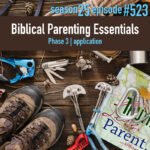[ad_1]
 What you teach is crucial. It’s important to have a clear scope and sequence.
What you teach is crucial. It’s important to have a clear scope and sequence.
What you teach should be a road map to what you want children to know, believe and understand.
But I believe that how you teach is just as important as what you teach.
The reason? Because we must strive to get the truth into children’s long-term memory. For that to happen, you must know how kids learn best and utilize teaching methods that will get the truth into their long-term memory.
Have you seen this?

As you can see, lecturing is the less effective way that kids learn. And yet, we continue to use this “talking head” method that doesn’t work.
If you want to see the kids in your ministry learn the truth and import it into their long-term memory, then you should use the most successful methods you see in the chart above.
Let’s take a look at these methods and see why they are the most effective.
1. Lecturing is the least effective way to teach children.
When you stand and teach kids with a talking head, the retention rate drops to under 10%.
2. When you kids the opportunity to read, they will remember about 10% of what you are trying to teach them.
Do you give children the opportunity to read Scripture in your class or environment?
Instead of the kids having to listen to you read parts of the lesson, why not give them an opportunity to read parts of it?
How about giving kids the opportunity to read illustrations that you are using in your lesson?
2. When you use audio / visual in your lessons, the retention rate doubles to 20%.
Yesterday, I taught a lesson for our K to 2nd grade classes.
I used over 60 slides and 3 video clips.
Why?
Because this generation hears with their eyes. A picture truly is worth a thousand words.
I used several audio clips as well.
Why?
Audio and visual teaching methods work. Push play this coming weekend and watch what happens. The kids will engage.
3. Demonstration leads to a remembrance rate of 30%.
Demonstration is considered the first active method of learning. In short, it means a teacher showing a student something on a practical step by step basis. An example would be showing a child how to have a quiet time with Jesus.
4. Discussion ups the retention rate to 50%.
I had several discussion times built into the lesson I taught yesterday. We allotted a total of 14 minutes for discussions throughout the lesson. Let kids talk at designated times. Have specific questions ready for them to discuss.
5. Practice rate.
When kids act out what they are learning, they are able to apply it to their life and the retention rate goes all the way up to 75%!
Yesterday, I gave the kids several opportunities to act out the truth we were learning. I put them in scenarios at school, home and during an average day.
6. Last but not least. When you teach someone else what you have learned, your retention rate goes all the way up to 90%!
90%! Wow! That’s awesome!
Pair kids up and have them share what they have learned today.
Does your curriculum include these elements?
Do want to move what you are teaching kids into their long-term memory?
Do you want to teach kids the way they learn best?
Then take a look at your curriculum. Does it include these elements? If not, be sure to check out my Connect12 curriculum. Each lesson must pass through a learning grid before it becomes an approved lesson.
You can get more information about Connect12 curriculum at this link.
[ad_2]
Source link








You must be logged in to post a comment.